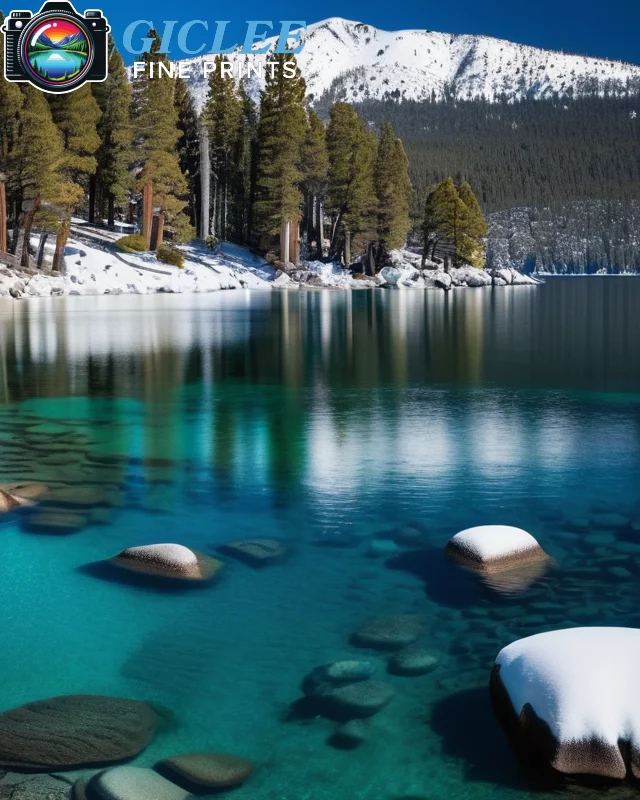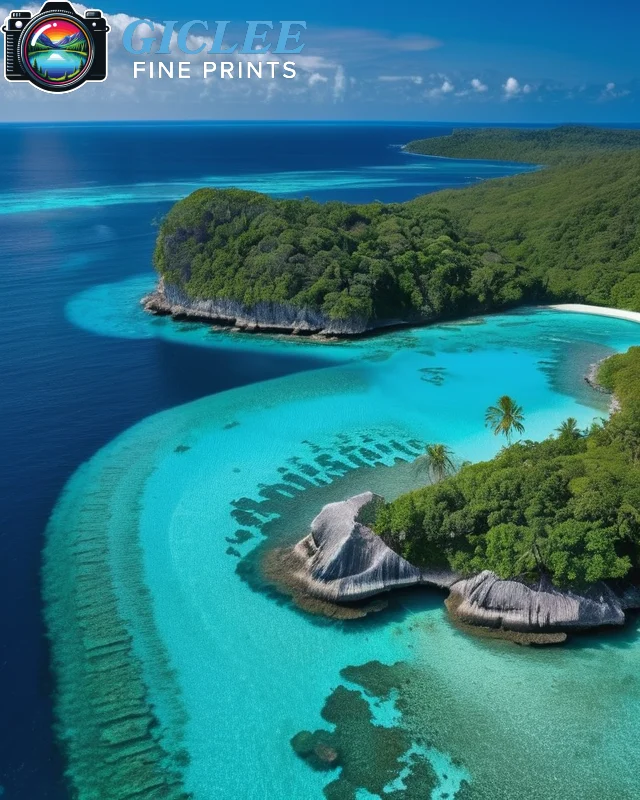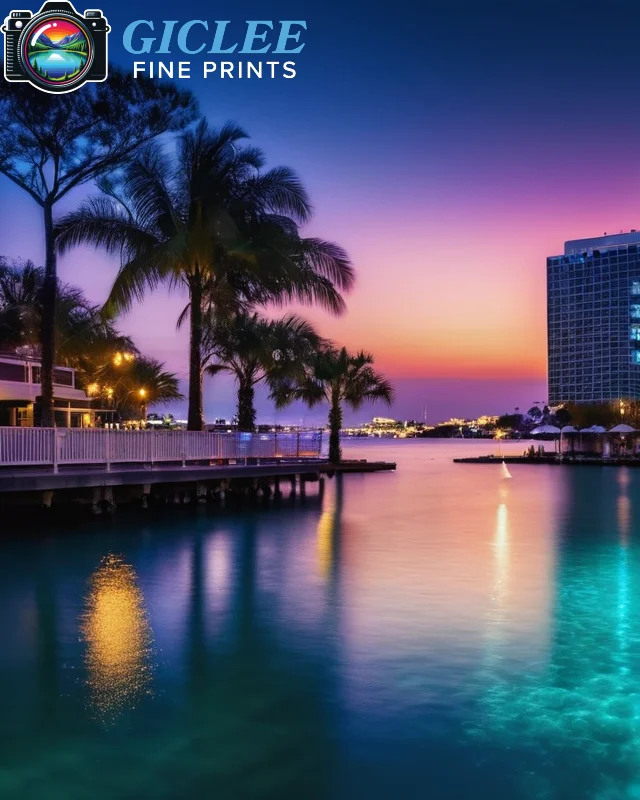
Giclee printing is renowned for producing high-quality, archival-grade prints that showcase the full depth, color, and detail of a photograph. For professional photographers, giclee prints offer the perfect solution for presenting work that stands the test of time. At Giclee Fine Prints, we provide photographers with expert printing services to bring their images to life.
Choose High-Resolution Images
When printing with giclee, image resolution is crucial for maintaining clarity, sharpness, and detail in large-scale prints. Always work with the highest resolution file available to avoid any loss in quality when enlarging your images.
Key Tips:
- Minimum Resolution: For high-quality giclee printing, aim for a resolution of at least 300 DPI (dots per inch). This ensures your image retains fine details, even in larger print sizes.
- Tiff or PNG Files: Use uncompressed file formats such as TIFF or PNG to preserve the maximum amount of detail. JPEGs can cause compression artifacts, which may become visible in large prints.
Best For:
- Large-format prints, such as canvas or fine art paper prints, where detail and clarity are essential.
- Professional photography portfolios or gallery exhibits where the quality of the image must remain flawless at any size.
Select the Right Paper or Canvas
The medium you choose for your giclee print will affect how the image looks and feels. Different materials can enhance various aspects of your photograph, from color vibrancy to texture and depth.
Options to Consider:
- Canvas: Perfect for creating a painterly, textured finish. Canvas softens the look of your image slightly, adding an artistic, gallery-ready feel. Canvas prints are also ideal for gallery wraps where the image extends over the edges of the frame.
- Fine Art Paper: Provides a smooth, matte finish with excellent color accuracy and sharpness. Fine art paper is ideal for high-detail images or black-and-white photography where subtle tones need to be preserved.
- Metal Prints: For a sleek, modern look, metal prints offer high contrast and glossy finishes that make colors pop and add a contemporary flair to your photos.
Best For:
- Fine art photographers looking to achieve the highest possible quality for art exhibitions or limited-edition prints.
- Canvas prints for portrait photographers aiming to create warm, rich tones and textures.
Optimize Color Profiles for Printing
To ensure that the colors in your printed image match what you see on screen, it’s important to work in the right color profile and calibrate your monitor.
Key Tips:
- Use Adobe RGB or ProPhoto RGB: These color spaces offer a wider gamut than sRGB, capturing more colors and nuances in the image. This is particularly important for giclee printing, which supports a broader range of colors than standard printing methods.
- Calibrate Your Monitor: Before submitting your images for print, calibrate your monitor to ensure accurate color representation. This helps to avoid discrepancies between your digital file and the final printed piece.
Best For:
- Landscape and wildlife photographers who need to capture vibrant colors and subtle shifts in tone.
- Professional photographers who require accurate color matching across prints for clients or exhibitions.

Use Soft Proofing to Preview the Final Print
Soft proofing is an essential step for photographers looking to get the best possible results from their giclee prints. Soft proofing allows you to simulate how the colors in your image will appear on different paper types before you print.
How to Soft Proof:
- Use Print Profiles: Download and apply the ICC profile for the specific printer and paper you’ll be using. This will simulate the color shifts that may occur based on the printing medium.
- Adjust as Needed: Once you see the soft proof, you can make any necessary adjustments to brightness, contrast, or saturation to ensure the printed image matches your vision.
Best For:
- Fine art photographers or professionals selling prints, where color accuracy and tonal consistency are critical.
- Exhibition photographers preparing large-format prints where slight shifts in color or contrast may affect the final display.
Consider Print Size and Image Composition
The size of your giclee print will affect how the composition is perceived, especially when enlarging the image. Make sure that your image’s resolution and composition are appropriate for the size you choose.
Key Tips:
- Maintain Balance: Ensure that the subject of your image remains the focal point when enlarged. Check the negative space and overall balance of the composition to avoid awkward cropping or disproportionate framing.
- Choose the Right Print Size: For large-scale prints, such as canvas or fine art paper prints, ensure that the resolution supports the enlargement. Small prints may work better for portraits or images with minimal detail, while landscapes or highly detailed photos can benefit from large formats.
Best For:
- Photographers creating large-format prints for gallery walls, offices, or home decor.
- Small, intimate prints where finer details need to be carefully considered and preserved.
Use Archival Inks and Materials
One of the key advantages of giclee printing is its archival quality. Archival inks and paper are designed to last for decades without fading or deteriorating, making them perfect for professional photographers who want their work to stand the test of time.
Key Benefits:
- Fade Resistance: Archival inks resist fading from light exposure, ensuring your prints stay vibrant for years.
- Durability: Archival materials are less likely to yellow or degrade over time, keeping your prints in pristine condition.
Best For:
- Limited-edition fine art prints or photography portfolios that need to retain their value and quality over time.
- Collectors and clients who expect longevity from their purchased artwork.

Pay Attention to Print Borders
When preparing your file for giclee printing, consider whether you want to include a border. Borders can provide a clean, professional look and make framing easier.
Key Tips:
- Add a Border: A 1-2 inch border around the image can help when framing, especially for fine art paper prints. It ensures that no part of the image is lost under the frame.
- Gallery-Wrap for Canvas: If you’re opting for a gallery-wrapped canvas, decide whether you want the image to extend over the sides or if you’d prefer a solid color wrap around the edges.
Best For:
- Photographers offering framed prints or gallery wraps where framing and presentation are important.
- Canvas prints where the image can wrap around the stretcher bars for a seamless presentation.
Test Print on Smaller Sizes
Before committing to a large print, consider ordering a test print at a smaller size to ensure everything looks perfect. This allows you to spot any issues with color, contrast, or sharpness that might not be noticeable on screen.
Key Benefits:
- Quality Assurance: A smaller test print lets you verify the quality of the print and make adjustments before creating a large-format version.
- Cost-Effective: Test prints are a cost-effective way to ensure that the final print meets your expectations, especially when working on a large or expensive project.
Best For:
- Professional photographers preparing large prints for clients, galleries, or exhibitions.
- Fine art photographers creating limited-edition prints where perfection is essential.
Contact Us
Our address is: 3816 Pioneer Trail Ste #3, South Lake Tahoe, CA 96150
Email: Info@gicleefineprints.com
FAQs
Giclee printing uses high-resolution inkjet printers and archival inks to produce fine art prints with exceptional color accuracy, detail, and longevity. It’s considered the highest standard for professional photography and artwork reproduction.
The choice depends on your style. Canvas offers texture and depth, while fine art paper provides smooth, vibrant detail. Metal prints are best for sleek, high-contrast images.
A minimum resolution of 300 DPI is recommended for giclee prints to ensure sharpness and clarity, particularly for large-format prints.


